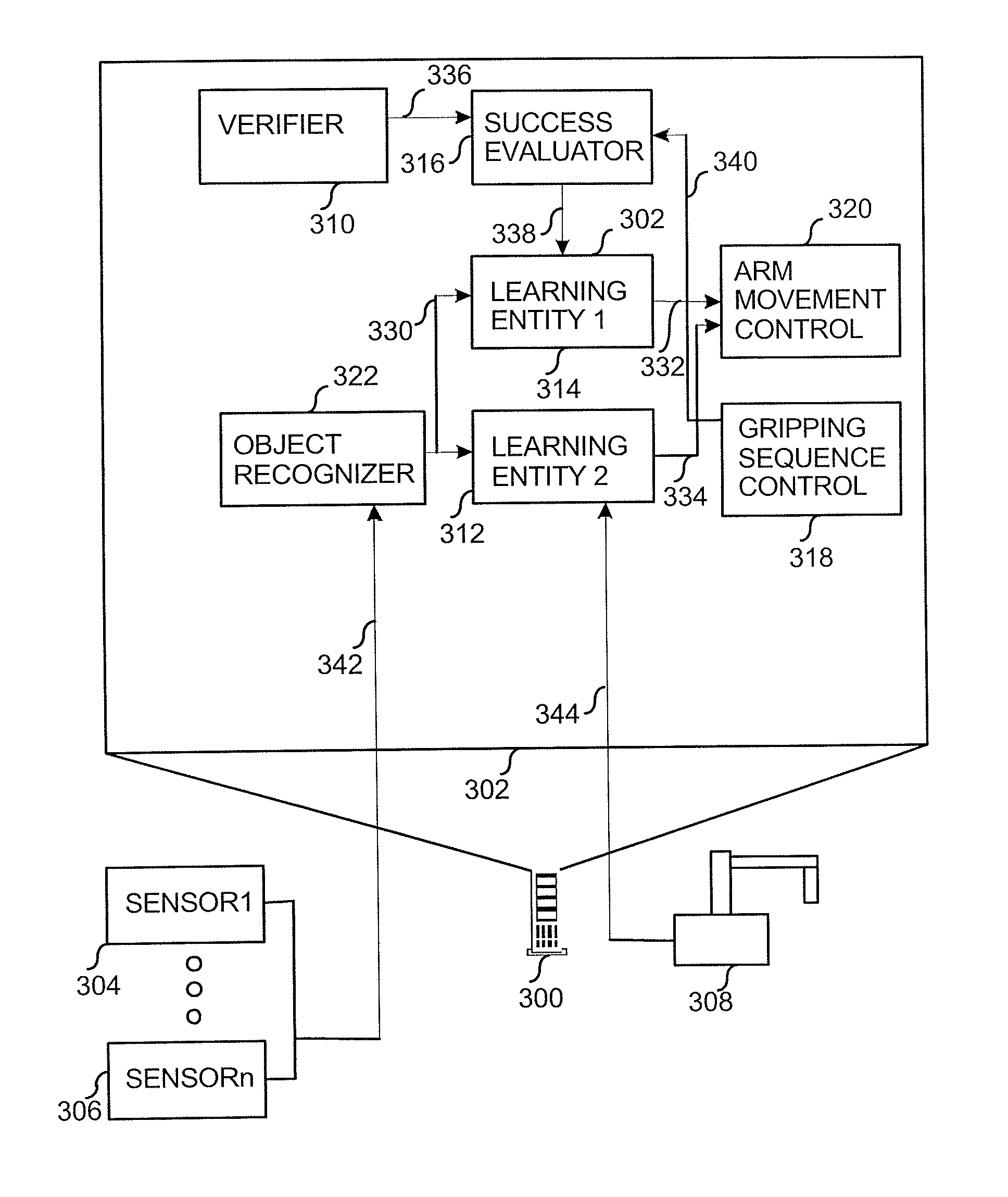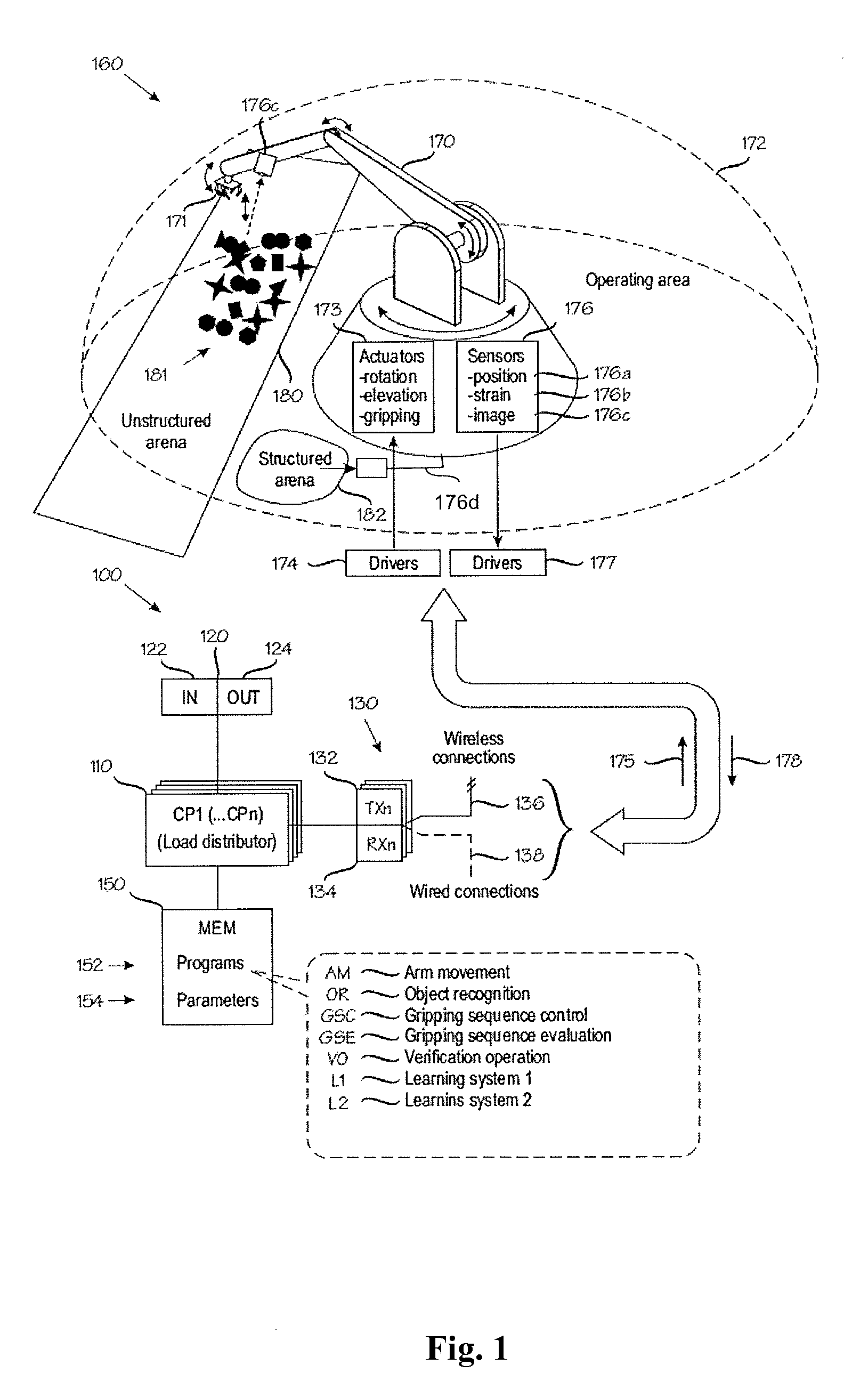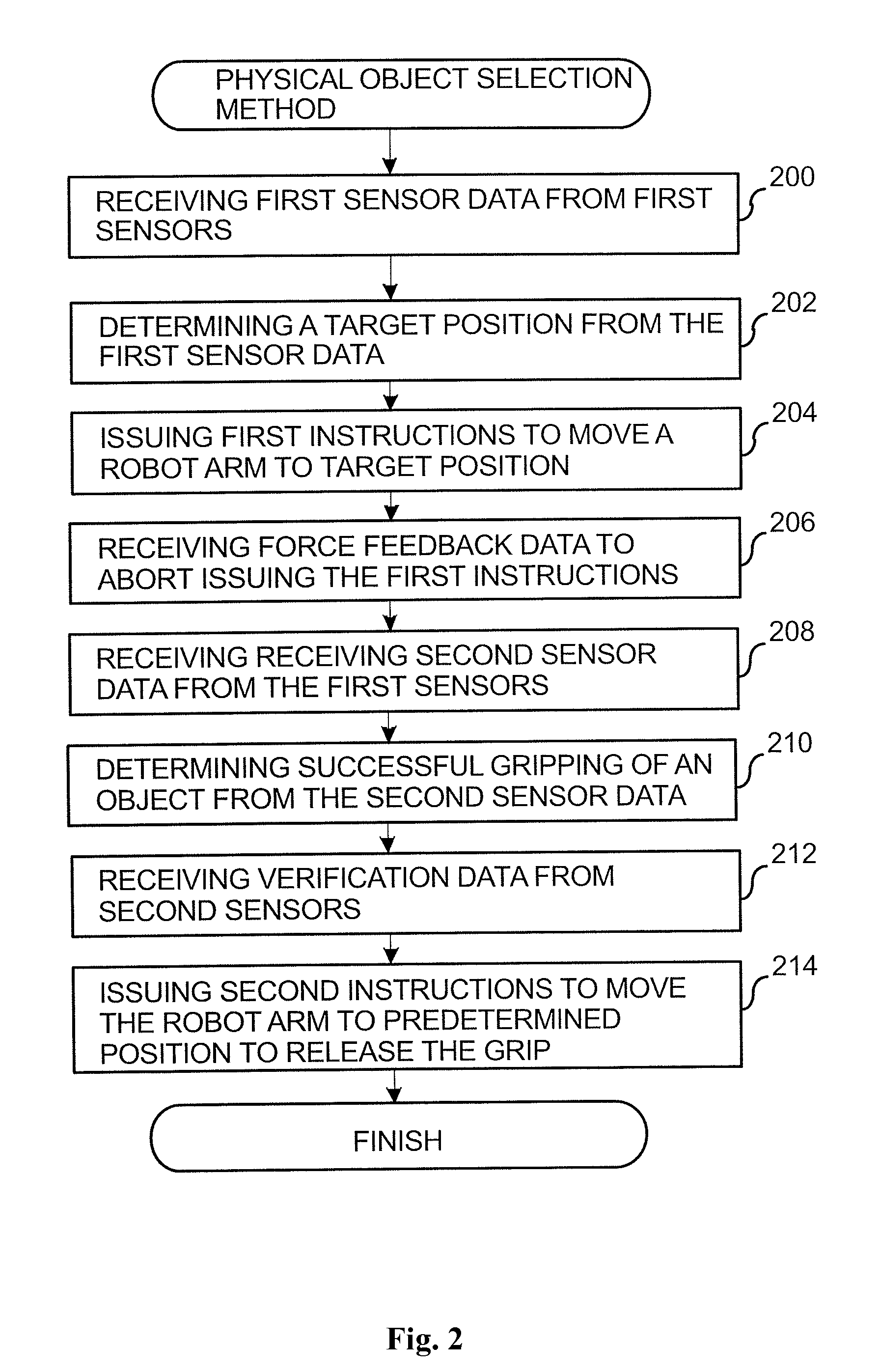Method for the selection of physical objects in a robot system
a robot system and physical object technology, applied in the field of robot system and physical object selection, can solve the problems of unsuitable pre-programmed movements, difficult pining, automatic manipulating objects, etc., and achieve the effect of improving the quality of object selection
- Summary
- Abstract
- Description
- Claims
- Application Information
AI Technical Summary
Benefits of technology
Problems solved by technology
Method used
Image
Examples
Embodiment Construction
[0049]Reference will now be made in detail to the embodiments of the present invention, examples of which are illustrated in the accompanying drawings.
[0050]FIG. 1 is a block diagram illustrating a robot system for the selection of physical objects in one embodiment of the invention. In FIG. 1 a data processing apparatus 100, in short an apparatus, comprises a central processing unit (CP) 110 and memory 150. Some embodiments of the invention employ multiple processors CP1 through CPn, plus a load distribution unit for distributing load among the multiple processors. The one or more processors control the robot arm by executing programs 152 stored in one or more memories 150. During execution, the programs 152 set up and update various parameters and variables 154 in the memory 150. Some parameters may be represented, for example, as tables, arrays, lists, sparse or dense matrixes or other data structures.
[0051]In addition, the data processing apparatus 100 comprises or utilizes exte...
PUM
 Login to View More
Login to View More Abstract
Description
Claims
Application Information
 Login to View More
Login to View More - R&D
- Intellectual Property
- Life Sciences
- Materials
- Tech Scout
- Unparalleled Data Quality
- Higher Quality Content
- 60% Fewer Hallucinations
Browse by: Latest US Patents, China's latest patents, Technical Efficacy Thesaurus, Application Domain, Technology Topic, Popular Technical Reports.
© 2025 PatSnap. All rights reserved.Legal|Privacy policy|Modern Slavery Act Transparency Statement|Sitemap|About US| Contact US: help@patsnap.com



